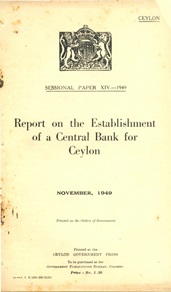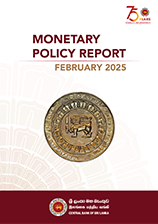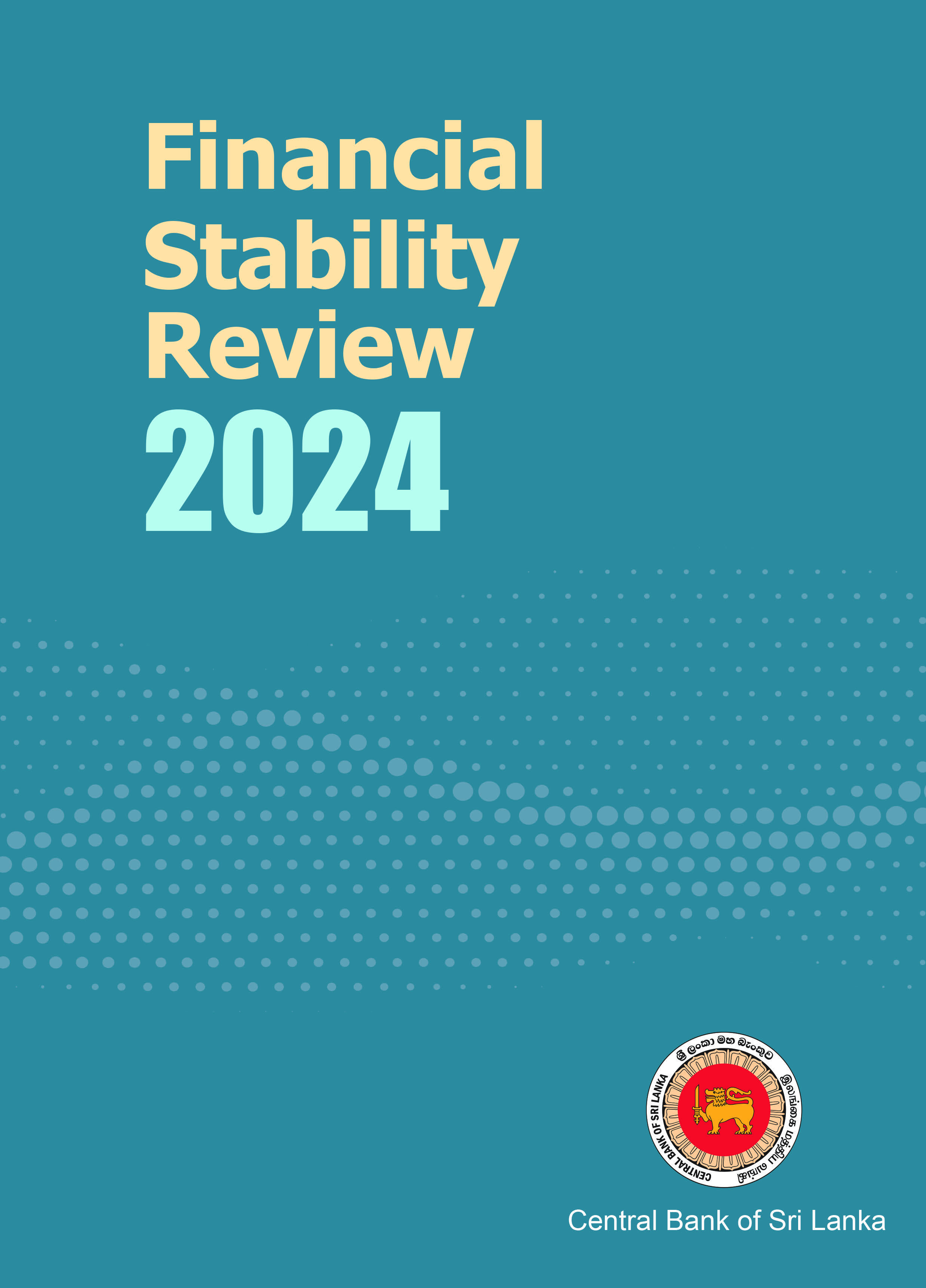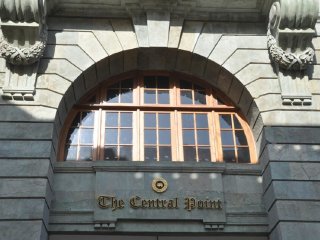The Monetary Board of the Central Bank, at its meeting held today, 08 April 2019, decided to maintain policy interest rates at their current levels. Accordingly, the Standing Deposit Facility Rate (SDFR) and the Standing Lending Facility Rate (SLFR) of the Central Bank will remain at 8.00 per cent and 9.00 per cent, respectively. The Board arrived at this decision following a careful analysis of current and expected developments in the domestic economy, the financial market as well as the developments in the global economy, with the broad aim of stabilising inflation at mid single digit levels in the medium term to enable the economy to reach its potential.
-
Monetary Policy Review - No. 2 of 2019
-
Opening of a Counter to Issue Coins to the General Public
The Central Bank of Sri Lanka will open a Counter at the ground floor of the Central Bank Head Office Building, No.30, Janadhipathi Mawatha, Colombo 01 on 27 March 2019, to issue coins to the general public.
This counter will be opened for the public from 9.00 a.m. to 11.00 a.m. on every Wednesday and Thursday, except public and bank holidays.
-
Inflation Increased in February 2019
Headline inflation as measured by the year-on- year change in the National Consumer Price Index (NCPI, 2013=100)1 increased to 2.4 per cent in February 2019 from 1.2 per cent in January 2019 mainly due to the base effect. Meanwhile, year-on-year Non-food inflation increased to 6.7 per cent in February 2019 from 6.5 per cent in January 2019 while Food inflation also increased to -2.9 per cent in February 2019 from -4.8 per cent in January 2019.
-
Issuances of International Sovereign Bonds (ISB) by the Central Bank of Sri Lanka
With reference to the recent paper articles on the governance process and issuing yields relating to the 5-year and 10-year International Sovereign Bonds (ISBs) issued by the Central Bank of Sri Lanka (CBSL) on behalf of the Government of Sri Lanka (GOSL), the CBSL wishes to make the following clarifications:
-
Sri Lanka Purchasing Managers’ Index - February 2019
Manufacturing activities increased at a slower rate in February 2019 compared to January 2019, mainly driven by the decrease in new orders and production, especially in manufacturing of textiles, wearing apparels, leather and related activities. This decline was mainly due to the lesser number of working days in February. Stock of purchases also decreased during the month in line with the decrease in new orders and production.
However, a slight improvement in employment was experienced with the recruitment of new employees to enhance business activities for upcoming seasonal demand. Meanwhile, suppliers’ delivery time lengthened at a slower rate. Logistical issues experienced at the beginning of February and supply disruptions due to Chinese new year holiday season have lengthened the suppliers’ delivery time. All sub-indices apart from new orders and production, recorded values above the neutral 50.0 threshold.
-
External Sector Performance - December 2018
The trade deficit declined significantly in December 2018 (year-on-year) with a notable deceleration in import expenditure. Exports grew by 1.4 per cent while imports fell by 15.3 per cent in December 2018 (year-on-year).
Total exports of goods grew by 4.7 per cent in 2018 to US dollars 11.9 billion while imports recorded a growth of 6.0 per cent to US dollars 22.2 billion. Consequently, the trade deficit widened moderately to US dollars 10.3 billion in 2018 from US dollars 9.6 billion in 2017.
Earnings from tourism remained healthy with a 4.8 per cent (year-on-year) growth in December 2018, resulting in a total income of US dollars 4.4 billion in 2018, a growth of 11.6 per cent from 2017.
-
The Democratic Socialist Republic of Sri Lanka USD 2.4 billion International Sovereign Bond Offering
On March 7th, 2019, the Central Bank of Sri Lanka (CBSL), on behalf of the Democratic Socialist Republic of Sri Lanka (Sri Lanka), returned to the USD bond markets, successfully pricing a new issuance of USD 1.0 billion 5-year and USD 1.4 billion 10-year Senior Unsecured Fixed Rate Bonds (the Bonds) with maturity dates of March 14th, 2024 and March 14th, 2029, respectively. The Bonds have been rated ‘B2’, ‘B’ and ‘B' by Moody's Investors Service, Standard and Poor’s and Fitch Ratings respectively.
-
Land Price Index – Second Half of 2018
Land Price Index (LPI) for Colombo District, compiled by the Central Bank of Sri Lanka (CBSL), reached 125.9 during the 2nd half of 2018, recording an increase of 18 per cent compared to the 2nd half of 2017. The three sub-indices of LPI, namely residential, commercial and industrial have contributed to this increase.
LPI is compiled covering all Divisional Secretariat (DS) divisions of Colombo District using per perch bare land prices collected from the Government Valuation Department in order to monitor the developments in the real estate sector. To maintain homogeneity, three separate sub-indices for residential, commercial and industrial lands are computed, considering the diverse nature of the land use, and the overall LPI is calculated by taking the average of these three sub-indices.
-
IMF Reaches Staff-Level Agreement on the Fifth Review of Sri Lanka’s Extended Fund Facility
A staff team from the International Monetary Fund (IMF) led by Manuela Goretti visited Colombo during February 14-28, 2019 to resume discussions on the fifth review under Sri Lanka’s economic reform program supported by a three-year Extended Fund Facility (EFF) arrangement. At the end of the visit, Ms. Goretti made the following statement:
-
The Financial Action Task Force Endorsed the Progress Made by Sri Lanka
The Financial Action Task Force (FATF), the global policy setter on Anti-Money Laundering and Countering the Financing of Terrorism (AML/CFT), has made the initial determination that Sri Lanka has completed its action plan and warrants an on-site assessment to verify that the implementation of Sri Lanka’s AML/CFT reforms has begun and is being sustained, and that the necessary political commitment remains in place to sustain implementation in the future. The decision was taken at the FATF Plenary held during 20-22 February 2019 in Paris.










